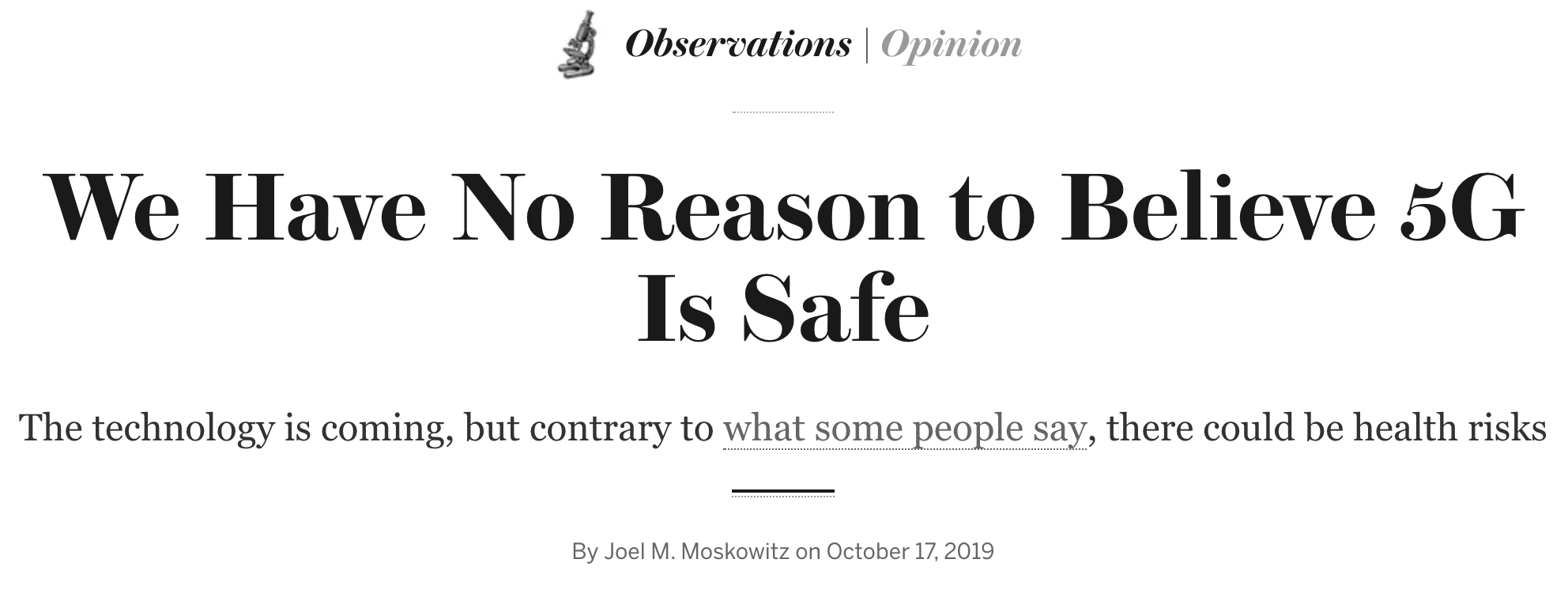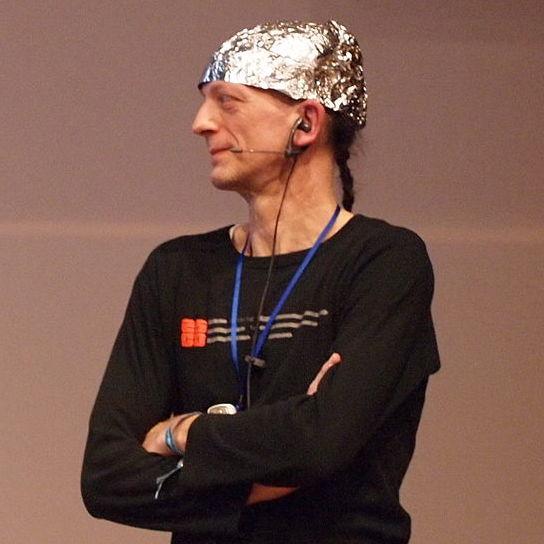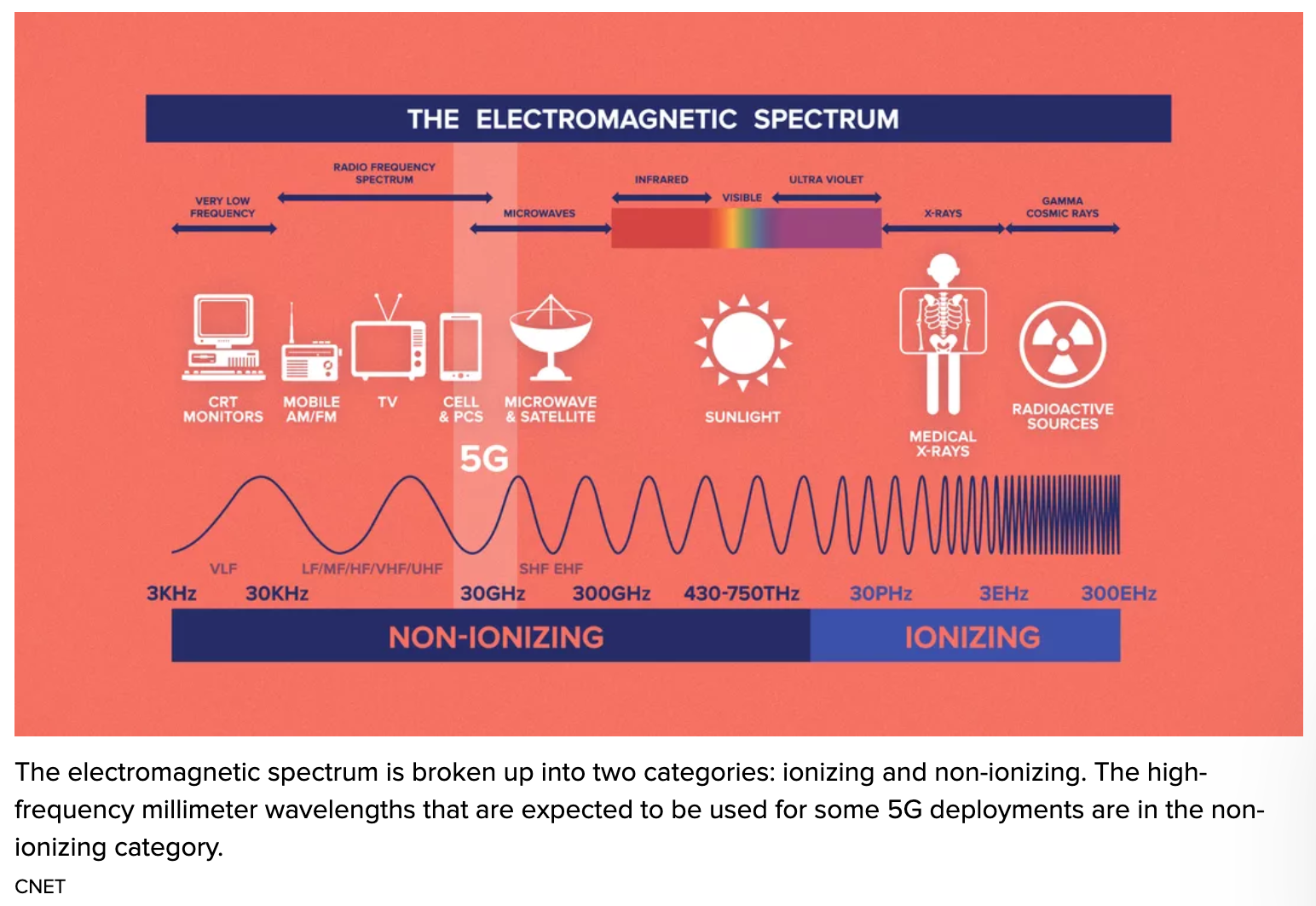It's official. Scientific American will publish absolutely anything.
This is not hyperbole or exaggeration. In August, SciAm published an article claiming that our food supply was "poison," vegetables are "becoming more like sugary snacks," and chronic diseases such as obesity and cancer are due to GMOs and glyphosate. It was the sort of insanity that you might expect to read on a site with little to no editorial control (like the Huffington Post) or on a conspiracy website (like InfoWars).
Due to a severe backlash, SciAm was forced to publish a corrected article, which served as a marginal improvement over the original. Basically, it was "upgraded" from raging dumpster fire to smoldering trash can.
One would have thought that the editors at SciAm would have learned their lesson. They did not.
Scientific American Says 5G Is Dangerous
The latest abomination published on SciAm involves 5G, the next generation in wireless technology. While end users (i.e., people like you) won't experience much of a boost in internet speed for your smartphone or laptop, 5G will allow more "smart technologies," like self-driving cars and an "internet of things." It's a basic infrastructure improvement that is required to take the next step in society's technological advancement.
5G is also safe. It's not terribly different from the electromagnetic radiation associated with wi-fi and cell phones. The New York Times published an excellent article titled, "The 5G Health Hazard That Isn't," and CNET published a diagram depicting 5G's place in the electromagnetic spectrum. Note that it is located in the radio wave spectrum, close to the frequencies for cell phones, computers, microwaves, and satellites.
Astrophysicist Dr. Ethan Siegel explained to me previously that "three things must be considered to determine if a source of radiation is dangerous: (1) the energy per photon, (2) the total amount of energy, and (3) the ability of the exposed object to absorb the radiation." How does 5G stack up?
We know that the radio wave spectrum, in general, is safe. There is a physical reason for it: The photons associated with this part of the electromagnetic spectrum are "non-ionizing," which means that they do not have enough energy to break chemical bonds. We also use these devices at a low wattage (i.e., a low amount of total energy), which is why you can boil water in a microwave (which operates at 1,000 watts) but not with your wireless router (which operates at 1 watt).
All together, we have no reason to believe that 5G is unsafe. So, SciAm published an article saying the exact opposite:

It should be noted that the author, Joel Moskowitz, believes Wi-Fi is toxic, which is particularly ironic since he works at a university that deploys Wi-Fi everywhere on campus. He is also a conspiracy theorist who believes the State of California is withholding evidence that cell phones cause cancer. Let's face it. If Dr. Moskowitz was alive in the 1600s, he'd be burning witches.
In the SciAm article, Dr. Moskowitz cites research to support his viewpoint (witches cell phones are bad), but all of it can be refuted by other research. The truth is that, as the aforementioned CNET article said, most of the research in this area is really shoddy. Then, ideologically driven activists like Joel Moskowitz cherry-pick the literature that supports them and ignore the rest.
Yes, we can always do with more, higher quality research. But the logical starting point is to assume that 5G is safe, just like cell phones and Wi-Fi. If sufficient evidence shows something to the contrary, then we should reconsider the status quo.
In the meantime, Scientific American might wish to ponder the utility of its existence.





